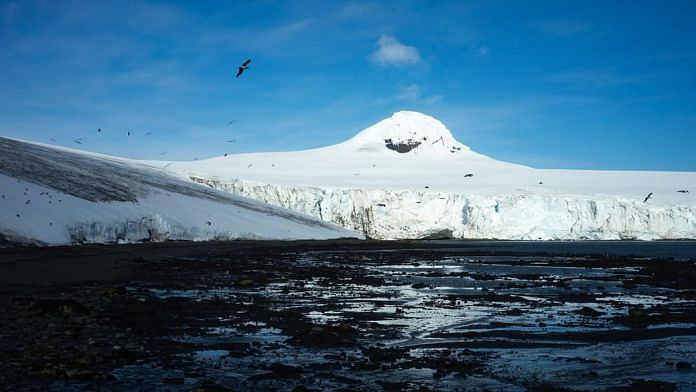The world’s shrinking glaciers contain less ice than previously estimated, according to a ground-breaking study that highlights a future of tight water supplies as climate change accelerates.
Scientists for the first time measured the thickness and movement of more than 250,000 mountain glaciers using new satellite imaging techniques. More than 1 million hours of computing time was used to analyze nearly 812,000 pairs of high-resolution photos. By estimating the thickness of a glacier, the scientists were able to more accurately pinpoint the volume of ice it contains.
The survey encompassed 98% of areas on Earth that were covered in glaciers from 2017 to 2018. It found wide variations in ice volume and freshwater reservoirs that hundreds of millions of people depend on for drinking water, agriculture and electricity generation. That includes glaciers never before mapped in areas of New Zealand, South America and Europe, according the paper published in the journal Nature Geoscience on Monday.
Researchers at France’s Institute of Environmental Geosciences and Dartmouth College determined that the Himalayas held 37% more ice than past surveys had found while the Andes in South America contained 27% less.
Those findings could be relatively good news for the 8 million people that live in the upper Indus and Chenab basin of the Himalayas who rely on glacier meltwater for more than half of river flow during dry seasons. The study estimated that glacier water reservoirs there are 17% to 31% larger than thought. Researchers also calculated that glacial water reservoirs are 30% to 87% larger in a less populated sub-basin of the Brahmaputra River in the Himalayas.
“The Himalayas were the exception,” said Mathieu Morlighem, a co-author of the study and professor of earth sciences at Dartmouth. “Almost everywhere [else], we found thinner ice.”
For instance, the 4 million people who live in three catchment basins of the tropical Andes mountains could face water shortages earlier than expected. The scientists discovered that glaciers in that region hold 20% less ice on average than previously estimated and are among the fastest melting.
The 2.2 million residents of La Paz, the capital of Bolivia, depend on ice melt from one of those basins for up to a third of their water supply in dry months. “It seems inevitable that the reduced total reservoir of ice… will have an impact sooner than anticipated.” wrote the researchers.
Glaciologist Romain Millan, lead author of the study and a postdoctoral scholar at the Institute of Environmental Geosciences, said that he hopes scientists will use this new tool to model the future availability of glacial water. “It’s important for policymakers to anticipate the effects of climate change on glaciers and water supplies,” he said.
The researchers lowered past estimates of mountain glaciers’ contribution to sea level rise by 20%. If all the glaciers melted — excluding large ice sheets in Greenland and Antarctica — ocean levels would increase by about 10 inches rather than the 13 inches previously projected.
Although that’s a positive development, it’s a fraction of the many feet of sea level rise that could be triggered by the liquidation of ice sheets in Greenland and Antarctica. “It does not change the fact that glaciers are melting faster and faster,” said Millan.
He and Morlighem stressed that the study’s estimate that the planet’s glaciers hold less ice than thought was largely due to a correction in the way ice volumes are calculated — rather than a specific determination that ice is melting faster.
In the past, one group of glaciologists would determine the volume of ice sheets in Greenland and Antarctica while another group would quantify the ice in mountain glaciers. When a mountain glacier was adjacent to an ice sheet, the total volume would sometimes be double-counted by the two groups.
The researchers said that satellite imaging is an indirect calculation of glacier thickness and called for a greater effort to conduct on-site measurements. Less than 2% of the world’s glaciers have been physically measured.
Such data on the likely future availability of meltwater will be crucial for governments making decisions about when and where to build water infrastructure as glaciers continue to retreat, according to the scientists. –Bloomberg
Also read Gautam Adani overtakes Mukesh Ambani as Asia’s richest person




